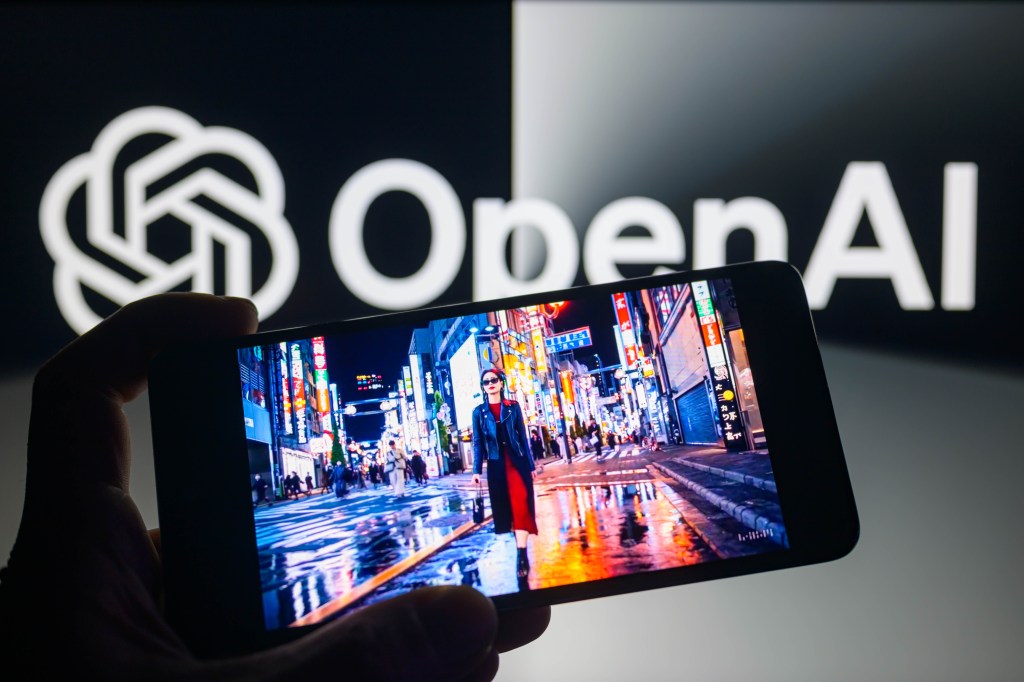“The next media revolution won’t be televised—it will be prompted.” Andrew Rosen author of Medium Shift.
Generative AI is transforming media and advertising by enabling rapid, high-quality video creation, but will it ever replace human creativity?

Can Generative AI be used to create an actual advertising film from scratch?
Sort of.
My LinkedIn feed is increasingly populated with non-official ads, a testament to the growing interest and experimentation with Generative AI. While I’m yet to witness an official client-endorsed ad film entirely crafted with Generative AI, the trend is unmistakable. Since OpenAI, the company behind ChatGPT unveiled SORA, an avalanche of other text-to-video tools has emerged.
Sora creates one-minute videos that look like they were made by a top-tier production house, just like other Generative AI tools such as Runway Gen-2, Pika Labs, HeyGen, InVideo, VEED, and my favourite, Lumalabs. These tools now allow creators to generate high-quality video and audio content at an accelerated pace with unprecedented quality. The influence of these technologies extends beyond efficiency; it has started challenging conventional notions of creativity, talent, and value.
Related
From Democratising Skills to Elevating Imagination
Generative AI video tools allow anyone with keyword or sentence inputs (prompts), talent, and curiosity to generate impressive video content. This democratisation of production is both an opportunity and a challenge. The now-famous spec Volvo ad, created in 24 hours by film colourist Gaál László, illustrates this perfectly. László’s work, which can be viewed here, showcases where the technology is heading. Built as an experiment, the video has hit close to 2M views.
The interesting thing is that if I had tried to create the ad using the same tools, even though I am quite technical, I wouldn’t have achieved the quality of the output Laszlo has reached. For me, this is a reflection. When he does an entire spot that looks so much better than what others had been doing with the same tools, it highlights how vital talent, taste, and culture are when tech becomes a given. AI is undoubtedly democratising access. However, there is a long way to go before replacing people with specific talent, judgment, and imagination; unless your videos, of course, don’t need creativity, talent, and judgment, then tech is ready.
GAI in Hollywood and Madison Avenue: Beyond Speed and Efficiency
For many years, the television, film, and advertising industries have shared a symbiotic relationship, where the boundaries between entertainment and marketing have often blurred, creating a robust ecosystem of content creation, distribution, and monetisation. It has also driven technological innovations, from product placement and branded content to developing streaming platforms and targeted advertising.
But it seems the symbiosis is now dead. With Hollywood being invaded by tech players like Amazon, TV is holding onto perishing legacies, and advertising groups are trying to find their place in a world dominated by short-form videos and pressures for efficiency.
Pencil is the self-claimed number one generative AI marketing company. In a recent interview with AdAge, Nick Emery, founding partner and CEO of Brandtech Media, owner of the agency, said that the business has prepared a few client pitches with just two people. He also predicted a future where marketing clients won’t outsource work that Generative AI can do to advertising agencies and will prefer to bring it internally to their in-house agencies, causing a huge growth driver for this advertising model. Other large advertising groups are also adapting. WPP made a deal with Google to integrate AI into WPP’s “AI-powered marketing operating system,” Omnicom, Publicis, Dentsu, and others are also building AI marketing platforms.
Generative AI has been a driver of mass content creation as automation. The big conversation in advertising regarding artificial intelligence right now is just how much of the work machines can take over in an industry that prides itself on being able to summon emotion. After all, the godlike AI guru Sam Altman claimed that 95% of marketing work today could be done by machine.
In a hard-pressure economy, is GAI putting advertising out of business?
Sérgio Brodsky, a senior executive in Strategy and Brand, believes that “Generative AI has turned the creative craft into an accounting enterprise. Large agency networks once relied on talent and ideas; now they prioritise efficiencies over effectiveness.” He adds, “GAI’s promise of lowering costs has sparked a race to the bottom rather than enabling game-changing pursuits and an opportunity for Media groups to reinvent. But as the saying goes: ‘the machine is only as good as the human driving it.’ That’s where experienced consultants come in—to disrupt faux creativity and unlock intangible value by augmenting our know-how.”
Sora and similar services will likely increase snackable content, like social media content, and internet advertising, like promotional videos for products. Services like short educational videos, internal corporate training videos, and casual content will be impacted sooner. It’s easy to imagine services that can incorporate Generative AI-generated videos and avatars right now. Just look at what HeyGen and Synthesia can do, from dropping an Amazon product list URL to generating promotional video content to studio-quality videos with AI avatars in less than three minutes.
But things can go beyond creating ads for TV or short videos for TikTok using Generative AI. Brent Smart, Telstra CMO, recently offered his views and an example by Telstra at an industry event. Every year, Telstra has its free Calls to Santa program, which allows consumers to go to a payphone, dial in, and speak to Santa. Historically, Telstra used a recorded message. In 2023, Generative AI enabled it to create two-way conversations. Calls went from 150,000 to 600,000 calls to Santa. This is an excellent example of augmented intelligence using AI, not replacing anyone or anything, just augmenting. With AI, we often think about it as a way to do things quickly or generate content effortlessly. It can also create great experiences if we use it creatively.
Film and TV: More competition
Sora and similar tools still have a long way to go until they are ready to replace the film-making industry—the high costs of servers, the length of the stories, and the craft. The real threat is to TV and the ability that GAI has unlocked to produce short, simple, personalised, and fast content. YouTube creators are flooding YouTube with GAI videos. Creators using AI tools generate an enormous library of competing videos, adding to the 500 hours of video uploaded every minute. The longer the long tail of competition, the harder it is for BOVDs, SVODs, and Free-to-air TV to win attention and engagement. More content means more competition for attention.
Netflix is clearly paying attention. Their annual report in 2023 states that “the development and use of generative artificial intelligence [is] rapidly evolving. If our competitors gain an advantage by using such technologies, our ability to compete effectively and our operations results could be adversely impacted.”
Locally, Channel Nine, in their annual report in 2023, says, “Over the past 12 months, both the Board and management team have spent time assessing how Nine currently uses AI, what the opportunities are for further development of these uses and new initiatives that could be implemented. We also see the potential for Nine to use AI to drive significant longer-term benefits across content production, optimisation, and commercialisation throughout the business.”
Add to the threat the possibility that potential viewers may start making their own short videos instead of watching television. Creating personal and customised videos, such as “Show my son Oliver and his brother Joshua going on an adventure to the beach and meeting animals along the way who teach them lessons of kindness and friendship,” may be more enjoyable than many TV shows right now.
As generative AI evolves, its impact on advertising, film, and TV will be profound. The key to navigating this transition lies in acknowledging what is happening, being open, and being willing to experiment.
Tools we use are just that—tools. It is your vision, creativity, and judgment that will have the highest impact. In the words of Walt Disney, “If you can dream it, you can do it.”


